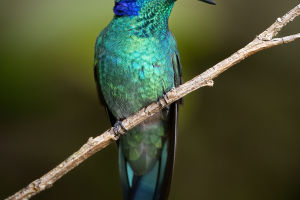Kingfishers are small, vividly colored birds widely distributed around the world, known for their striking plumage and agile hunting skills.
Belonging to the family Alcedinidae, kingfishers comprise about 90 different species, each adapted to various habitats ranging from tropical rainforests to temperate zones, and commonly found near rivers, lakes, and coastal areas.
These birds play a significant role in their ecosystems and are also deeply embedded in cultural symbolism, representing various positive attributes across different societies.
Biological Characteristics of Kingfishers
Kingfishers are generally small birds, with body lengths ranging from 10 to 45 centimeters. Their feathers exhibit brilliant hues of blue, green, and orange.
This vivid coloration is not only used to attract mates but also serves as effective camouflage when they are hunting near or in water. Most kingfishers have long, pointed beaks, which are perfectly adapted for catching small fish and insects, their primary sources of food.
These birds inhabit diverse environments, from lush tropical rainforests to the icy reaches of the Arctic Circle. They are predominantly found near water sources, relying on clear and clean bodies of water for hunting and nesting.
Kingfishers possess exceptionally sharp vision, allowing them to accurately spot and target prey underwater even from great heights. Their hunting technique involves an impressive and swift dive from above, plunging into the water at remarkable speeds to snatch their prey, making them one of nature’s most adept hunters.
Symbolism of Kingfishers
Kingfishers hold a rich tapestry of symbolic meanings across various cultures. Here are some of the primary symbolic associations:
1. Happiness and Good Luck
In many cultures, kingfishers are considered omens of happiness and good fortune. Their radiant colors and graceful flight evoke a sense of beauty and joy.
In traditional Chinese culture, for example, the image of the kingfisher frequently appears in art and literature, symbolizing auspiciousness and beauty. Their presence is often seen as a harbinger of good luck and positive outcomes.
2. Peace and Tranquility
The serene habitats of kingfishers, such as quiet lakesides and tranquil rivers, often lead people to associate these birds with peace and tranquility.
Observing a kingfisher by a calm water body can evoke feelings of inner peace and relaxation. In some cultures, sighting a kingfisher is considered a symbol of spiritual calm and mental serenity.
3. Love and Loyalty
Certain species of kingfishers are known for their monogamous relationships, often choosing a lifelong mate and jointly raising their offspring. This behavior has led to kingfishers being regarded as symbols of love and loyalty.
In numerous literary works and legends, the kingfisher is depicted as a representation of steadfast love and devotion, embodying the ideals of romantic fidelity and enduring partnerships.
Kingfishers, with their vivid colors and remarkable hunting skills, hold a significant place in both nature and human culture. They are not only crucial members of their ecosystems, playing important roles in controlling insect populations and maintaining the balance of aquatic environments, but they also carry rich symbolic meanings of happiness, peace, love, and agility.
As we appreciate and study these extraordinary birds, it becomes increasingly important to focus on their conservation, ensuring that their beauty and symbolic significance endure for future generations.


